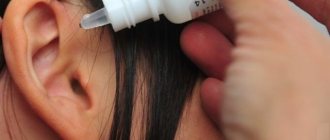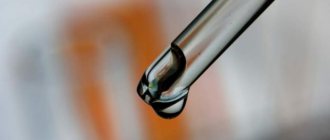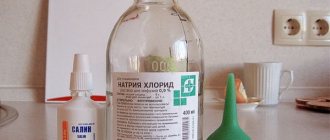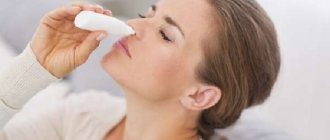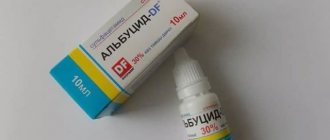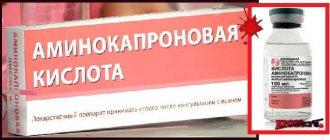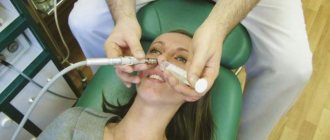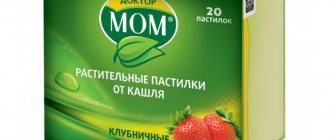Composition and release form
Collargol is a drug that belongs to the group of antiseptics. It contains albumin and colloidal silver.
The drug is sold in powder form, which must be dissolved in liquid before use. Only after this a colloidal solution of Collargol is formed. It has a weak balsamic aroma and a transparent consistency, without impurities or a specific shade.
You can buy pre-prepared drops at the pharmacy. But before purchasing, the pharmacist will need to explain for what purpose the medicine is needed: to treat the organs of vision or for instillation into the nose for ENT diseases. This is necessary to dilute the powder to the desired consistency.
pharmachologic effect
The medicine has the ability to neutralize pathogenic bacteria such as:
- Streptococci.
- Staphylococci.
- Escherichia coli.
- The simplest microorganisms.
- Fungal spores.
- Bacilli.
- Pseudomonas.
- Moraxella.
Upon contact with the mucous membrane, the active substance has the following effects:
- Bactericidal.
- Disinfection.
- Antiseptic.
- Anti-inflammatory.
- Astringent.
When treating a surface on which there is an inflammatory process, a decrease in the production of purulent exudate is observed. The active component helps block the process of synthesis of a substance that is required to increase the number and vital activity of pathogenic microorganisms.
When exposed to a significant volume of the drug, the cellular structure of microorganisms is destroyed, which provokes their death.
Indications for use
The drug Collargol is recommended for the treatment of ENT diseases. The following situations are identified in which a medication is prescribed for use in the nose:
- Protracted chronic rhinitis.
- Purulent sore throat, progressing to the chronic stage.
- Sinusitis of an infectious nature.
- With the growth of adenoids.
- Pharyngitis.
In case of the development of diseases of a viral nature that provoke an inflammatory process in the nasal passages, accompanied by clear discharge, Collargol is not used.
Instructions for use: indications for Collargol
According to the instructions for use, Collargol solution is used externally (in the form of ointments or rinses) and locally (in the form of drops in the nose and eyes, as well as for treating the mucous membranes of the genitourinary organs).
The main indications for the use of Collargol are:
- Dermatological diseases:
- purulent, long-term non-healing wounds;
- erysipelas (a very unpleasant skin disease caused by streptococcus);
- chancroid (a disease that is sexually transmitted, the causative agent is a bacterium of the genus Haemophilus influenzae).
- Ophthalmological diseases:
- purulent conjunctivitis - inflammation of the outer membrane of the eye due to a bacterial infection;
- blenorrhea is a severe inflammatory disease of the conjunctiva of the eye, the source of which is gonococcus. Most often develops in newborns infected during childbirth.
- Urological diseases:
- chronic cystitis caused by an unknown pathogen;
- chronic urethritis, regardless of origin. For urological pathology, Collargol is used topically, washing the urethra.
- Diseases of the nasopharynx:
- inflammatory processes of the nose and throat of various etiologies - pharyngitis, tonsillitis, rhinitis.
Silver preparations are effective antiseptic (disinfecting) agents.
The medicine Collargol ®, related to colloidal silver solutions, is often used as part of complex therapy for erysipelas, inflammation of the outer eye membranes (conjunctivitis), chronic inflammation of the lacrimal sac (dacryocystitis), soft chancre, paraproctitis, adenoiditis and sinusitis (Collargol nasal drops ® can be buried even for children), etc.
Collargol ® for newborns is often prescribed as part of complex therapies for dacryocystitis.
Collargol ® is an effective bactericidal antiseptic.
In undissolved form, Collargol ® is produced in the form of black-green or black-blue small plates, characterized by a pronounced metallic luster.
Upon contact with water, Collargol ® dissolves and forms colloidal solutions of silver.
At the same time, Collargol ® plates swell and gradually dissolve, leading to the formation of rapidly collapsing sols. In this regard, Collargol ® solutions are never prepared in reserve.
The shelf life of Collargol ® in solution does not exceed thirty days.
Collargol ® solution is quite easy to prepare (provided that high-quality plates are used). Sometimes, to speed up dissolution, the plates are first ground in a mortar.
When using low-quality plates (spoiled, expired, improperly stored, etc.), cloudy solutions with sediment are obtained (due to the fact that the plates do not completely dissolve). It should be noted that low-quality plates are characterized by the absence of a specific metallic luster.
Solutions for external use are filtered through cotton wool. Solutions for washing wounds, microenemas, etc., are passed through filters made of ash-free paper or through glass filters.
Collargol ® composition
In prepared solutions of Collargol ® for microenemas, rinses, drops, etc. contains seventy percent silver and thirty percent protective albumins (sodium salts of protalbic and lysalbic acids).
Albumins are added to Collargol ® solutions to keep silver molecules in an active state, since the resulting sols are easily destroyed in the presence of acids or salts of heavy metals.
Most often, prepared solutions are prescribed in the form of 1-2% of drugs for instillation into the eyes, nose, or douching. According to indications, more concentrated solutions of the drug can be used.
For younger patients, the solution is used in concentrations of up to two percent.
Collargol ® recipe in Latin
The prescription for the medicine is written by the attending physician. It must be remembered that solutions for external use cannot be used for eye infections or for douching.
Example of prescriptions for medicine in Latin:
Rp.: Sol. Collargoli 0.2 percent, one hundred milliliters
DS Clean wounds.
Rp.: Sol.Collargoli three percent, ten milliliters DS 5 drops. into the nasal passage, twice a day.
Collargol ® release form
The product is available in the form of small plates or powders. Subsequently, other dosage forms of the drug are made from the raw materials, according to the prescription prescribed by the doctor.
Most often, the drug is used in the form of:
- eye drops (two, three, five percent solution);
- ointments at five and fifteen percent;
- solutions for rinsing, nasal instillation and external use in the form of 0.2, 1.2% solution.
Dosage and method of use of Collargol ®
1-3 percent solutions can be used in the form of ophthalmic drops. The product is used one to two drops at a time. every six to twelve hours.
In ENT practice, they can use a 1-3 percent solution of five drops twice a day or two or three drops. every six to eight hours.
When treating soft chancre, erysipelas or lymphangitis, Collargol ® ointments can be applied to the affected area every 12-24 hours.
When treating purulent wounds, 0.2-2% solutions are used; for microenemas and instillations of the bladder, 0.2-2% solutions of the drug are used.
How to make microenemas with collargol ®
The volume of the enema, the temperature of the solution and the dosage of the drug are prescribed individually by the proctologist.
The procedure is performed on the side (the patient must pull his legs towards his stomach). The enema tip should be lubricated with Vaseline before administration.
The enema contents are administered slowly. After administering the solution, you need to lie on your side for 30 minutes.
Indications for use Collargol ®
Collargol ® has a pronounced bactericidal, astringent and antiseptic effect. The product is able to penetrate inside pathogenic microorganisms, disrupting the production of important enzymes and leading to the death of the pathogenic microorganism.
The product can be used to treat eye, venereal pathologies, diseases of the ENT organs and skin, urological infections, etc.
Collargol ® can also be used to mark the patient’s skin or when signing X-ray images.
In ophthalmological practice, collargol solutions are often used to treat conjunctivitis, gonorrheal eye lesions (including in the complex treatment of blennorrhea in newborns), dacryocystitis (for dacryocystitis, Collargol ® is often prescribed even to infants).
Also, Collargol ® solution can be effectively used for purulent, adenoiditis, purulent and other ENT pathologies. The effectiveness of the product is determined not only by the bactericidal properties of the drug, but also by its ability to reduce the degree of mucus production.
When used externally, the solution is effective for rinsing, as well as as part of complex therapies, soft chancre and lymphangitis.
Additionally, for soft chancre and lymphangitis, ointments with Collargol ® can be used.
Collargol ® is also effective for cystitis. However, the treatment of this disease must also be comprehensive. Instillation of the bladder with collargol in women and men cannot be used as the main method of treating the disease.
Additionally, Collargol ® solutions can be used not only for treatment, but also for diagnosis of dacryocystitis (tests for the patency of the lacrimal canals).
In proctology, Collargol ® is used primarily for paraproctitis and colitis. Microenemas with Collargol ® for hemorrhoids are indicated only when a secondary bacterial infection is attached.
Collargol ® contraindications
The drug is contraindicated for use in patients with individual intolerance to the components of the drug.
Pregnancy and childhood are not a contraindication to the drug, however, all treatment must be agreed with the attending physician.
Collargol during pregnancy and breastfeeding
As prescribed by the attending physician, Collargol ® solutions can be used to treat pregnant women.
According to indications, pregnant women may also be prescribed bladder instillations with Collargol ® for cystitis.
Collargol ® compatibility with alcohol
Since Collargol ® is not capable of systemic absorption, drinking alcohol does not affect the effectiveness of treatment.
However, it must be taken into account that this drug is practically not prescribed as monotherapy, and systemic antibiotics used in addition to Collargol ® are antifungal, etc. may be incompatible with alcohol.
Side effects of collargol ®
In most cases, the drug is well tolerated and does not cause complications from the treatment. In isolated cases, it is possible to develop allergic reactions to the components of the product.
Also, with long-term use in high dosages, the development of argyrosis (silver overdose) is possible.
This condition is accompanied by irreversible discoloration of the skin and mucous membranes in a grayish-blue color.
If the duration of treatment and dosages prescribed by the doctor are observed, no cases of overdose have been registered.
How to store collargol ®
Prepared solutions can be stored for up to 30 days. Vials for the drug should be made of opaque orange glass and stored in a dark place protected from ultraviolet radiation. The temperature in the room in which the solution is stored should not exceed twenty degrees.
After each use, the bottle must be tightly closed with a lid.
During the hot season, it is preferable to store the solution in the refrigerator.
Interaction with other drugs
According to indications, the drug can be combined with other medications. means.
The drug combines well with systemic antiviral, antifungal and antibacterial therapy, local agents, etc.
However, the drug is contraindicated for use with other drugs containing silver (to reduce the risk of overdose), NaCl drugs, hexamethylenetetramine, anesthetics, iodites, salts of alkaloid drugs, alcohols, electrolytes and adrenergic agonists.
Contraindications and side effects
It is not recommended to use the drug when the patient has individual hypersensitivity to one component or the entire drug as a whole.
The solution is approved for the treatment of inflammation in the nasal passages and other diseases in otolaryngology, pediatrics, and pregnancy.
Improper use of the medicine leads to hyperemia of the skin. The patient's skin takes on a grayish or silvery-bluish tint. The process occurs due to the accumulation of silver ions. Pigmentation is irreversible. Therefore, it is forbidden to use the medicine for 14 days.
Instructions for use
A special dosage is prescribed for each patient. Before instilling the product into the nose, testing is required: a solution is applied to the skin of the inner surface of the forearm. After 15-30 minutes, the reaction is assessed: if there is redness, peeling, or rash, you should refuse treatment with Collargol.
For children, it is recommended to use 1.5% essence. 1 drop is injected into each nasal passage of the baby. The frequency of administration in 24 hours is 4 times.
The instructions for use indicate that the drug can also be prescribed to newborns from the first days of birth.
Adults are allowed to use a consistency of 2-3%. Patients need to administer 1-3 drops up to 4 times a day. But before instilling the solution, it is necessary for both children and adults to rinse the nasal passages with saline solution.
Release forms and treatment regimens
The drug is available in the form of a solution and ointment for external local use..
Drops for the nose and eyes are produced in concentrations of 2, 3 and 5%, Collarhead ointment - 15%.
To treat pathology of the nasal passages and paranasal sinuses, a 2% solution is prescribed into the nose. Drop 2-3 drops into each nostril 1-3 times a day. Collargol nasal drops for children are prescribed only by a doctor for acute indications. Colloidal silver is a toxic substance that is not recommended for use on its own.
Collargol solution for eyes is prescribed at 2-3%. Drop 1 drop into the conjunctival sac 2-3 times a day.
Ointments are used in the form of applications. Lubricate the nasal mucosa 1-2 times a day .
Analogs
If it is not possible to use the original, the observing doctor will recommend analogues. Such drugs have an identical spectrum of effects:
- Ichthyol.
- Miramistin.
- Bismuth.
- Hydrogen peroxide.
- Citeal.
- Tsindol.
- Chlorhexidine.
- Iodovidone.
- Protargol.
- Sialor.
It is not recommended to independently select substitutes. Incorrect dosage provokes swelling of the nasal mucosa and worsening of the condition.
Collargol has a unique composition, the list of ingredients of which includes silver. The medicine should be used with caution and testing should be carried out before inserting into the nasal passages. The main thing is to follow the doctor’s recommendations and instructions for use.
Analogues of the product
Similar drugs are considered:
- Protargol;
- Sialor;
- Vitargol.
Collargol and Protargol - what's the difference?
Just like Collargol, Protargol belongs to products containing silver. However, Protargol uses silver oxide and in a lower concentration than Collargol.
In this regard, Collargol has a more powerful disinfecting and bactericidal effect on pathogenic microflora.
Protargol solution is safer, less likely to cause overdose and is preferable for use in nasal drops.
In this article you can read the instructions for use of the drug Collargol
. Reviews of site visitors - consumers of this medicine, as well as the opinions of specialist doctors on the use of Collargol in their practice are presented. We kindly ask you to actively add your reviews about the drug: whether the medicine helped or did not help get rid of the disease, what complications and side effects were observed, perhaps not stated by the manufacturer in the annotation. Analogues of Collargol in the presence of existing structural analogues. Use for the treatment of adenoids, purulent wounds, conjunctivitis, erysipelas in adults, children, as well as during pregnancy and lactation. Composition of the drug.
Collargol
- antiseptic bactericidal agent. A colloidal preparation of silver, it has an astringent, anti-inflammatory and more pronounced antiseptic effect than Protargol.
Compound
Silver + albumin + excipients.
Indications
- purulent wounds;
- adenoids;
- purulent rhinitis;
- conjunctivitis (including blenorrhea in newborns);
- erysipelas;
- lymphangitis;
- chronic urethritis;
- chronic cystitis;
- chancroid.
Release forms
Powder (for preparing a solution).
Solution for external use 0.2%, 1%, 2% (sometimes mistakenly called drops).
Eye drops 2%, 3%, 5%.
Are your eyes tired? Save the link to read later
Instructions for use and method of use
A 0.2-1% solution is used to wash purulent wounds.
1-2% solution - for washing the bladder with chronic cystitis (inflammation of the bladder), with urethritis (inflammation of the urethra). In the form of nasal drops for purulent rhinitis and adenoids in children.
A 2-3-5% solution in the form of eye drops is used to treat purulent conjunctivitis (inflammation of the outer membrane of the eye) and blenorrhea (acute purulent inflammation of the outer membrane of the eye).
For erysipelas, lymphangitis (inflammation of the lymphatic vessels), chancre, rubbing in 15% ointment is prescribed - adults 3 g, children 1 g 4 times a day.
Side effect
- argyrosis (skin darkening caused by silver retention in the body);
- hypersensitivity to the components of the drug (to silver elements).
Contraindications
Use during pregnancy and breastfeeding
There are no sufficient clinical data on the use of Collargol during pregnancy and lactation.
Use in children
The drug can be used in children on the recommendation of a doctor.
special instructions
The drug must be stored in orange, well-closed jars, protected from light.
Drug interactions
Analogues of the drug Collargol
Structural analogues of the active substance:
Analogs by pharmacological group (disinfectants):
- Azulan;
- Aquazan;
- Amident;
- Ammonia;
- Amukin;
- Argosulfan;
- Aseptolin;
- Benzamycin;
- Betadine;
- Betadine;
- Boric acid;
- Boric ointment;
- Brilliant green (zelenka);
- Vinilin (Shostakovsky Balm);
- Bismuth nitrate basic;
- Hexicon;
- Hexoral;
- Hydroperite;
- Hyposol N;
- Birch tar;
- Dermatol;
- Desquam;
- Ichthyol;
- Ichthyol ointment;
- Iodovidone;
- Iodoxide;
- Iodosept;
- Iodoform;
- Potassium permanganate (potassium permanganate);
- Camphor;
- Camphor alcohol;
- Categhel C;
- Menthol alcohol solution;
- Methylene blue aqueous solution;
- Miramistin;
- Hydrogen peroxide;
- Plivasept;
- Povidone iodine;
- Polyvinox;
- Protargol;
- Resorcinol;
- Romazulan;
- Salicylic ointment;
- Silver proteinate;
- Phenol;
- Feresol;
- Formalin;
- Chlorhexidine;
- Chlorhexidine bigluconate;
- Tsindol;
- Zinc oxide;
- Zinc sulfate;
- Zinc ointment;
- Zinc paste;
- Citeal;
- Ethanol;
- Etonium.
Collargol is an antiseptic drug made on the basis of colloidal silver.

